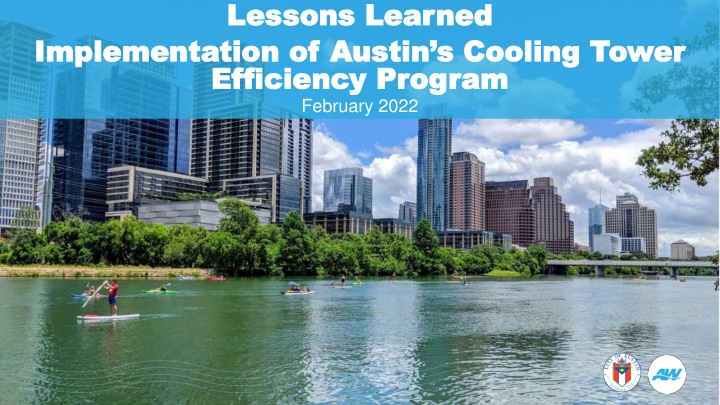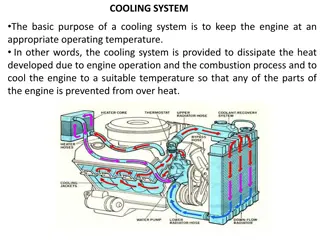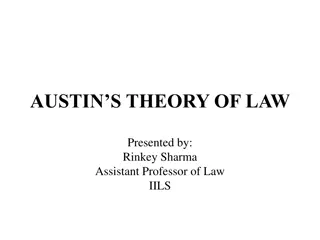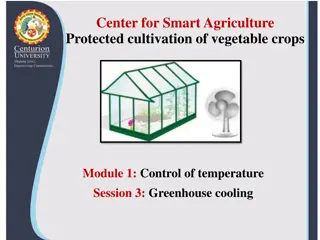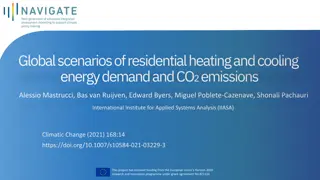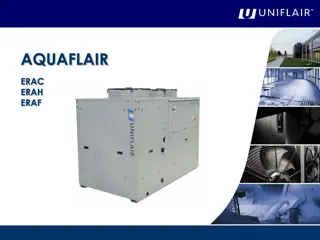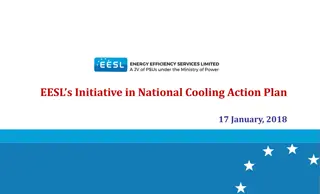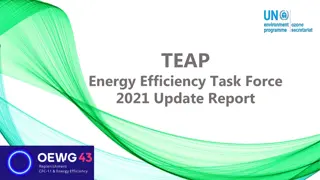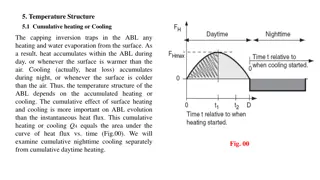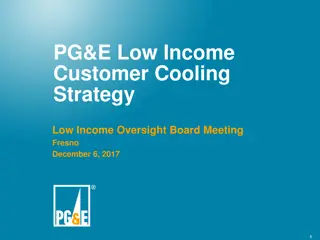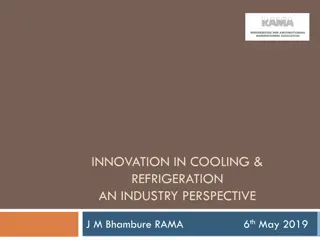Implementing Austin's Cooling Tower Efficiency Program
The Cooling Tower Efficiency Program (CTEP) in Austin focuses on high water use areas like cooling towers. It aims to save water by enforcing standards, inspections, and fines for non-compliance. The program history, requirements, and inspection details are essential components of this initiative, ensuring adherence to water conservation ordinances and promoting efficient water management practices in commercial and institutional facilities.
Download Presentation

Please find below an Image/Link to download the presentation.
The content on the website is provided AS IS for your information and personal use only. It may not be sold, licensed, or shared on other websites without obtaining consent from the author.If you encounter any issues during the download, it is possible that the publisher has removed the file from their server.
You are allowed to download the files provided on this website for personal or commercial use, subject to the condition that they are used lawfully. All files are the property of their respective owners.
The content on the website is provided AS IS for your information and personal use only. It may not be sold, licensed, or shared on other websites without obtaining consent from the author.
E N D
Presentation Transcript
Lessons Learned Lessons Learned Implementation of Austin s Cooling Tower Implementation of Austin s Cooling Tower Efficiency Program Efficiency Program February 2022
Water Conservation Compliance Group Commercial Facility Irrigation Assessment Car Wash Efficiency Cooling Tower Efficiency Program Residential Irrigation Compliance Program
Program background The Cooling Tower Efficiency Program (CTEP) was created to shift focus to high Commercial, Industrial and Institutional (CII) water use. In 2013 an end use study of CII water use identified cooling towers as having the greatest potential for water savings. Cooling towers account for 20-30%, or more, of a facility s total annual water use.
Program History Cooling Tower standards are adopted and become effective on January 1st. January 1,2008 Cooling Tower standards Austin City Council approves the mandatory registration and annual inspection requirements as part of the local amendments to the 2015 Uniform Mechanical Code and Uniform Plumbing Code. September 6, 2017 approval of registration and inspection. Austin City Council approves administrative fines to ensure compliance to the Cooling Tower Efficiency Program requirements. December 10, 2020 approval of fines
Program History Cooling Tower Submissions by Year 350 300 250 200 150 100 50 0 2016-2017 2018 2019 2020 2021 Inspection Registration
Program Requirements December 2020- Existing requirements were added to the Water Conservation ordinance. 5 Cycles of concentration Overflow sensors and alarms connected to the building central energy management system or utility monitoring dashboard. Make up and blow down meters to manage consumption Conductivity controllers Drift eliminators (this is a requirement) Treatment to minimize the growth of Legionella and other microorganisms. Cannot operate a cooling tower in a manner that allows an overflow from the basin.
Inspections Cooling towers must conduct annual inspections. Report due by March 1 of each year Inspection must be within 90 days before due date Must be performed by third party Texas registered mechanical engineer or TDL licensed air conditioning and refrigeration contractor (Class A - RE combined) Report must be on AW form Must be sent to Austin Water Conservation Division
Cycles of Concentration (CoC) Recirculating Water Parameters Maximum Values Austin Water Cycles of Concentration 3300 336 9.82 Conductivity (micro-ohms) 2050 203 10 Total Dissolved Solids (ppm) 600 60 10 Total Alkalinity as CaCO3 (ppm) 500 60 8.33 Total Alkalinity as CaCO3 (ppm) 600 92 6.52 Calcium Hardness as CaCO3 (ppm) 300 41 7.31 Chlorides as CI (ppm) 250 39 6.41 Sulfates (ppm) 150 7 21 Silica (ppm) +2.8 Langelier Saturation Index (LSI) Recirculating water parameters are from ASHRAE 189.1- 2020 Standard for the Design of High-Performance Green Building. [1] Excluding galvanized steel [2] Galvanized steel (passivated) [3] Last reported during the 1st quarter of 2020 [4] Last reported during the 1st quarter of 2020
Program Challenges Finding cooling towers in the wild. Property turnover and sales. Program awareness Evaporative loss and CTEP Timely submissions from program participants
Program Challenges Many delegate cooling tower responsibility and do not understand the operation and maintenance of the equipment. There s an idea that lower cycles of concentration means better protection of cooling towers.
Lessons Learned 12 It s critical to follow-up with the cooling tower community and key stakeholders. Make yourself available to address issues. Work within our organization to find the other cooling tower programs. Create language that makes a business case for the program and various rebates and incentives. COOLING TOWER EFFICIENCY PROGRAM OVERVIEW
Summary of Findings: Avg. Property GPD Savings Total MGD Savings Compliance End Use % of Total 30% 30% 90% - Property Count Compliance Program Annual August (Peak) Annual August (Peak) Cooling Tower 457 2,477 219 3,153 1,520 86 450 319 2,990 303 450 703 0.69 0.21 0.10 1.01 1.37 0.75 0.10 2.22 Facility Irrigation Assessment Carwash Efficiency Total
Analysis Plan: CT Compliance Program Analysis goal: Determine statistically significant water demand difference between compliant and non-compliant cooling towers Used monthly metered CT make-up water usage from the Evaporative Loss Program run by Billing Adjustment Services (N = 120 CTs; 80 Compliant; 40 Not Compliant) Available usage from Jan-2013 to Feb-2020 (N = 86 months), prior to COVID impacts Extensive outlier removal (one month at either side of identified outlier using the inter-quartile method and negative values) Employed random-effects panel regression using R and plm library Time-invariant measure of size (fan area) requires random-effects modeling Compliant Binary variable (0/1) to denote CT that had submitted registration/inspection information Compliant Since Binary variable (0/1) that starts the year of first registration/inspection submission Included variables to assess water demand impacts due to weather (avg. vs. peak) Disaggregated CTs by land use classification to arrive at more homogeneous groups
CT Water Use as a Percentage of Total Use Parcel Count 6 51 8 15 Avg. CT Use (GPD) 6,689 11,310 29,042 27,309 Avg. Parcel Use (GPD) 77,726 28,231 112,625 95,318 CT Use % of Total 8.6% 40.1% 25.8% 28.6% LU Description 300 400 500 600 General Commercial Office Buildings Industrial Institutional Utilities / Infrastructure All Other Land Uses All Land Uses 800 4 54,289 109,085 49.8% Others All 7 91 5,410 17,113 28,856 56,095 18.7% 30.5% Some variability across land use sectors on the parcel-level percentage of water use attributable to cooling towers Overall, about 30% of parcel water use is cooling tower use (for parcels with a cooling tower)
Conclusions: CT Compliance Program Weighted-average CT savings of 1,520 GPD assuming average weather conditions 2,990 GPD savings during the system-wide peak month of August Estimated total program potential avg. and peak savings of 0.69 and 1.37 MGD, respectively, based on current CT inventory Previous avg. savings estimate of 0.43 MGD from WF demand management strategies update, 3.3 MGD from WF 2018
Thank you Daniel Cavazos Environmental Compliance Specialist Sr. City of Austin | Austin Water, Water Conservation 512-974-3534 Daniel.Cavazos@austintexas.gov
